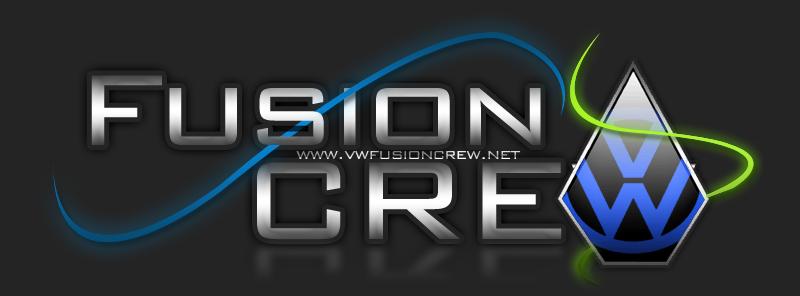Design Considerations
Page 1 of 1
 Design Considerations
Design Considerations
One of the main problems with turbochargers is that they do not provide an immediate power boost when you step on the gas. It takes a second for the turbine to get up to speed before boost is produced. This results in a feeling of lag when you step on the gas, and then the car lunges ahead when the turbo gets moving.
One way to decrease turbo lag is to reduce the inertia of the rotating parts, mainly by reducing their weight. This allows the turbine and compressor to accelerate quickly, and start providing boost earlier. One sure way to reduce the inertia of the turbine and compressor is to make the turbocharger smaller. A small turbocharger will provide boost more quickly and at lower engine speeds, but may not be able to provide much boost at higher engine speeds when a really large volume of air is going into the engine. It is also in danger of spinning too quickly at higher engine speeds, when lots of exhaust is passing through the turbine.
Turbochargers provide boosts to engines at high speeds.

Turbochargers provide boost to engines at high speeds.
A large turbocharger can provide lots of boost at high engine speeds, but may have bad turbo lag because of how long it takes to accelerate its heavier turbine and compressor. Luckily, there are some tricks used to overcome these challenges.
Most automotive turbochargers have a wastegate, which allows the use of a smaller turbocharger to reduce lag while preventing it from spinning too quickly at high engine speeds. The wastegate is a valve that allows the exhaust to bypass the turbine blades. The wastegate senses the boost pressure. If the pressure gets too high, it could be an indicator that the turbine is spinning too quickly, so the wastegate bypasses some of the exhaust around the turbine blades, allowing the blades to slow down.
Some turbochargers use ball bearings instead of fluid bearings to support the turbine shaft. But these are not your regular ball bearings -- they are super-precise bearings made of advanced materials to handle the speeds and temperatures of the turbocharger. They allow the turbine shaft to spin with less friction than the fluid bearings used in most turbochargers. They also allow a slightly smaller, lighter shaft to be used. This helps the turbocharger accelerate more quickly, further reducing turbo lag.
Ceramic turbine blades are lighter than the steel blades used in most turbochargers. Again, this allows the turbine to spin up to speed faster, which reduces turbo lag.
One way to decrease turbo lag is to reduce the inertia of the rotating parts, mainly by reducing their weight. This allows the turbine and compressor to accelerate quickly, and start providing boost earlier. One sure way to reduce the inertia of the turbine and compressor is to make the turbocharger smaller. A small turbocharger will provide boost more quickly and at lower engine speeds, but may not be able to provide much boost at higher engine speeds when a really large volume of air is going into the engine. It is also in danger of spinning too quickly at higher engine speeds, when lots of exhaust is passing through the turbine.
Turbochargers provide boosts to engines at high speeds.

Turbochargers provide boost to engines at high speeds.
A large turbocharger can provide lots of boost at high engine speeds, but may have bad turbo lag because of how long it takes to accelerate its heavier turbine and compressor. Luckily, there are some tricks used to overcome these challenges.
Most automotive turbochargers have a wastegate, which allows the use of a smaller turbocharger to reduce lag while preventing it from spinning too quickly at high engine speeds. The wastegate is a valve that allows the exhaust to bypass the turbine blades. The wastegate senses the boost pressure. If the pressure gets too high, it could be an indicator that the turbine is spinning too quickly, so the wastegate bypasses some of the exhaust around the turbine blades, allowing the blades to slow down.
Some turbochargers use ball bearings instead of fluid bearings to support the turbine shaft. But these are not your regular ball bearings -- they are super-precise bearings made of advanced materials to handle the speeds and temperatures of the turbocharger. They allow the turbine shaft to spin with less friction than the fluid bearings used in most turbochargers. They also allow a slightly smaller, lighter shaft to be used. This helps the turbocharger accelerate more quickly, further reducing turbo lag.
Ceramic turbine blades are lighter than the steel blades used in most turbochargers. Again, this allows the turbine to spin up to speed faster, which reduces turbo lag.
 Similar topics
Similar topics» More Design Considerations
» Porsche Cayenne GTS Accessories From JE Design
» Bentley Continental GT Stage II by Kahn Design
» Audi Student Design Project: *Intelligent Emotion* - Future
» Porsche Cayenne GTS Accessories From JE Design
» Bentley Continental GT Stage II by Kahn Design
» Audi Student Design Project: *Intelligent Emotion* - Future
Page 1 of 1
Permissions in this forum:
You cannot reply to topics in this forum|
|
|




